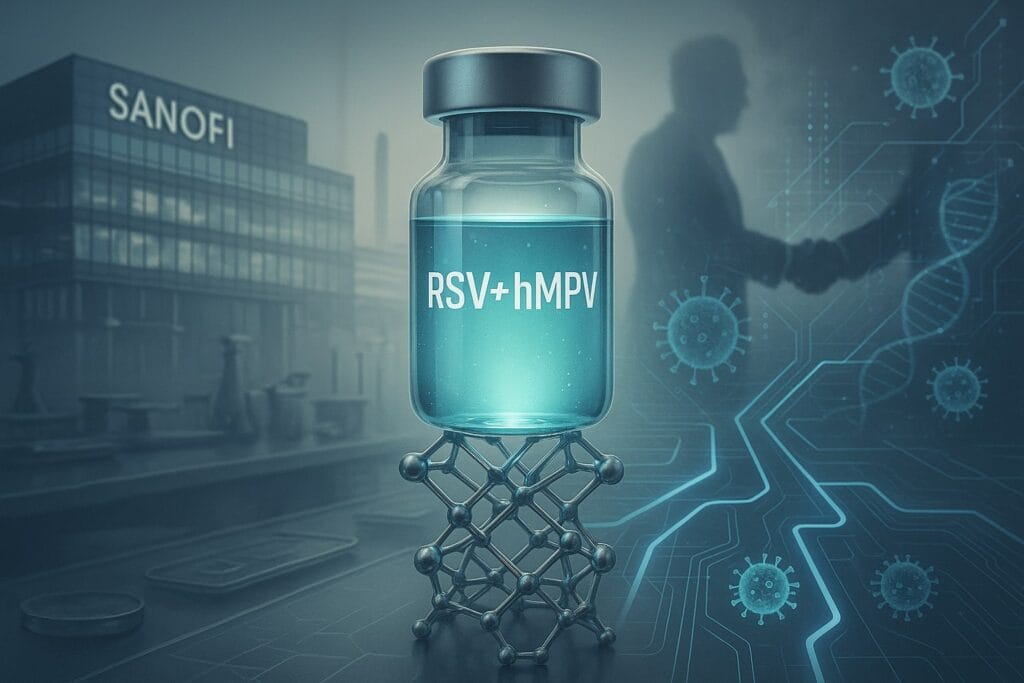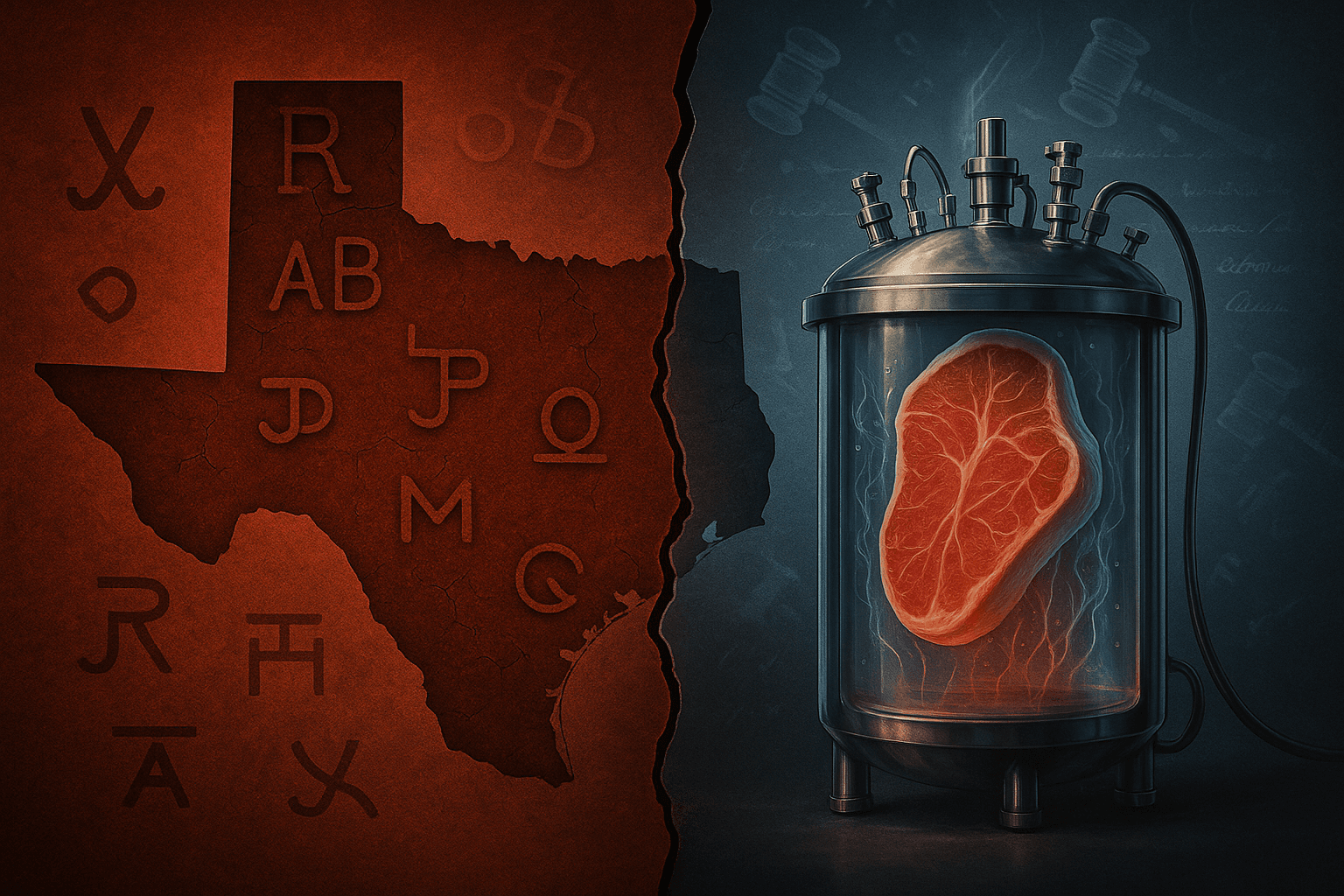In the high-stakes world of biotechnology, big pharma acquisitions often signal broader trends. The recent deal by Sanofi to acquire Vicebio, a UK-based vaccine biotech, for up to $1.6 billion is more than just another pharma buyout – it’s a case study in the value of platform technology. Vicebio isn’t being bought for a single commercial product (it has none, being in Phase 1 trials); it’s being bought for its Molecular Clamp platform, a novel way to design vaccines. This move – Sanofi paying $1.15 billion upfront for a preclinical/Phase 1 asset – speaks volumes about how major drugmakers view platform biotechs as strategic assets. In this analysis, let’s unpack the implications of this deal for the biotech industry’s platform model.
Table of Contents
ToggleThe Vicebio Deal: Buying a Vaccine Platform
First, the facts. Sanofi announced on July 22, 2025, that it will acquire Vicebio Ltd. for an upfront $1.15 billion in cash, plus up to $450 million in milestone payments. Vicebio’s claim to fame is its Molecular Clamp technology, originally developed at University of Queensland, which stabilizes viral surface proteins in the shape needed to trigger a strong immune response. This platform allows creation of multivalent vaccines – meaning a single shot protecting against multiple viruses – and does so in a way that yields vaccines which are stable as simple liquids (no deep freezing needed) and easy to produce at scale.
Vicebio’s lead program, VXB-241, is a combo vaccine for RSV and hMPV (two respiratory viruses that cause pneumonia in the elderly), now in a Phase 1 trial in older adults. Early data showed it’s safe and generates immune responses in people over 60. It also has a preclinical follow-up targeting three viruses (RSV, hMPV, PIV3) in one shot. In other words, Vicebio is leveraging its platform to address a clear market: next-generation respiratory vaccines.
Sanofi has strong motivation here. The company already markets an RSV prevention antibody for infants (beyfortus) with AstraZeneca, and it’s developing its own RSV vaccines using mRNA and other methods. But by acquiring Vicebio, Sanofi adds a non-mRNA vaccine approach to its pipeline, giving physicians and patients “increased choice” – a subtle nod to concerns that not everyone may want mRNA vaccines. In fact, the deal came just after some U.S. advisors voiced caution on mRNA in certain contexts. So strategically, Sanofi hedges its bets: it will have RSV combination shots via multiple platforms (mRNA, live attenuated, and now Molecular Clamp protein vaccines). This broad approach can be a selling point if one platform proves superior in certain populations or if safety perceptions differ.
Critically, Sanofi is not just eyeing one vaccine. The Molecular Clamp platform is applicable to many viruses – RSV, influenza, coronaviruses, etc. – essentially any pathogen where stabilizing a surface protein can improve a vaccine. This means Sanofi potentially bought itself a pipeline-in-a-box. It’s reminiscent of how they acquired Protein Sciences in 2017 for its recombinant flu vaccine tech, or Translate Bio in 2021 for its mRNA platform, or even Ablynx in 2018 for nanobody technology. Each of those deals (Translate was $3.2B, Ablynx ~$4.8B) was about obtaining a platform plus one lead asset. Vicebio fits that pattern: one lead product (RSV/hMPV vaccine) and a platform that could churn out many more vaccines.

From Vicebio’s perspective (backed by Medicxi, venBio, Goldman Sachs’s life sciences arm, etc.), a ~$1.6B exit at Phase 1 is a home run. It validates the platform biotech model: focus on a technological edge, get strong early data on a lead, and attract a giant to take you out. In Vicebio’s case, the platform solved a key problem – keeping viral proteins in the shape that human immune systems best recognize. That unlocks multivalent vaccines and simpler storage (the vaccine can be stored in regular refrigerators, not ultra-cold freezers). Those advantages likely drove Sanofi’s willingness to pay a premium. As Jean-François Toussaint, Sanofi’s R&D vaccines head, said, this tech enables “quicker development of fully liquid combination vaccines…simplifying manufacturing and distribution” – crucial for global immunization campaigns.
Platform Biotech: More Than One Shot on Goal
The Sanofi–Vicebio story highlights how platform biotechs differ from single-product biotechs. A platform company is built around a core technology that can generate multiple drug candidates. The idea is to have several shots on goal in case one drug fails, and to potentially address many diseases from one underlying innovation. This can be very attractive to big pharma, which is often shopping for future pipelines, not just one-hit wonders.
Implication one: Big pharma is willing to pay for platforms even before products are proven. Vicebio had no approved product, just Phase 1 data in a few dozen patients, yet Sanofi paid over a billion dollars. This mirrors other deals: e.g., Pfizer acquiring Array BioPharma for $11B (two approved cancer drugs but mainly a discovery platform), Roche’s $1.7B buy of Inflazome (preclinical inflammasome platform), etc. It signals that if a platform addresses a strategic gap – say, Sanofi wanting a presence in next-gen vaccines – pharma will move early rather than wait for Phase 3 results. The risk/benefit equation tilts in favor of early action when the potential upside is a whole suite of products and not just one. In Sanofi’s case, they saw Vicebio’s RSV combo as promising, but likely were just as interested in applying the clamp tech to flu or pan-coronavirus vaccines down the line.
Implication two: This underscores a trend of convergence in vaccine technology. Post-pandemic, every big vaccine player is assembling a toolkit: mRNA, recombinant proteins, vector vaccines, novel adjuvants, etc. Sanofi infamously fell behind on COVID-19 because it lacked mRNA, prompting its $3.2B Translate Bio acquisition in 2021. Now, with Vicebio, it ensures it won’t fall behind on the next innovation – multi-pathogen shots for respiratory illnesses. As one industry observer put it, Sanofi is boosting its RSV portfolio “beyond mRNA”. This is partly to address scientific uncertainty (no one knows which platform will produce the best long-term immunity or safety profile) and partly a market strategy (some patients may prefer or respond better to one type of vaccine).
The Vicebio deal also reflects the value of pandemic-spurred tech. Molecular Clamp technology was initially developed for a potential COVID-19 vaccine in 2020. That project was shelved due to an unexpected snag (an early candidate caused false positives on HIV tests due to a fragment used in the clamp – an interesting footnote in vaccine R&D). But the platform itself was sound, and now finds new life for RSV. This highlights that platform biotechs often pivot their technology to different targets; flexibility is a hallmark. For investors, it means a platform can create value even if the first application stumbles, as long as the underlying technology has broad potential.
Big Pharma’s Pipeline Hunger and Platform Premium
Zooming out, the Sanofi–Vicebio tie-up illustrates how biopharma M&A in 2025 is heavily pipeline-driven. Major drugmakers face looming patent expiries on blockbuster drugs by 2028–2030 (the “patent cliff”), and they have immense cash reserves to do deals – over $1.5 trillion in deal capacity across big pharma, according to IQVIA. There’s a mantra on pharma earnings calls: “business development remains a top priority”. In plain terms, they need new products or technologies to fill their pipelines. Platforms are especially coveted because they can potentially yield multiple future drugs to refill that pipeline, not just one.
This has made platform biotechs prime buyout targets. In oncology, for instance, platforms for next-gen cell therapies or immune engagers have been snapped up. In rare diseases, gene therapy platforms (like Roche buying Spark for gene therapy tech). The Vicebio purchase shows the same in vaccines. Notably, it came just weeks after Sanofi agreed to buy Blueprint Medicines for $9.1B to get a portfolio of oncology drugs. Sanofi’s CFO had said they had “significant capacity for further business development” in early-stage vaccines and drugs – clearly they meant it. This flurry of deals tells smaller biotechs: if you have a platform with even one promising clinical result, big pharma is watching.
However, a platform’s value is not guaranteed; it depends on proving the concept. Vicebio did the right things to make itself attractive: raised a hefty $100M Series B in 2024 to fund trials, hit its milestones (showing good safety/tolerability in elderly people – crucial for RSV vaccines), and had multiple shots in pipeline (bivalent and trivalent vaccines). That de-risked the platform just enough. We can infer that Sanofi’s due diligence likely focused on: does the clamp tech really produce a strong immune response? Can it be generalized to other viruses easily? And can Vicebio’s team deliver? The answers must have been yes across the board, given the price tag.
For the biotech industry, such acquisitions are double-edged. On one hand, it’s a positive sign: innovation is rewarded, and VCs can point to this exit as justification for funding platform plays. (Medicxi, the VC, will certainly tout this success – they “created” Vicebio precisely to pursue this vision.) On the other hand, it raises the question: should platform biotechs sell early or try to go the distance? Vicebio could have continued independently to Phase 2/3 and perhaps grown more valuable, but that route is riskier and costly. Many platform companies do IPO early to raise cash (e.g., Moderna famously IPO’d in 2018 while its products were still in trials, leveraging its platform story).
The implication for platform biotech strategy is that a clearly defined product vision anchored by a versatile platform is the winning combo. Vicebio had a “clear product vision” (best-in-class RSV combo vaccine) and executed to a point where a bigger player would eagerly take over. Other platform biotechs are likely examining this and thinking how to position themselves similarly: demonstrate the platform on a near-term product, then invite partnership or acquisition. It validates a model where you don’t necessarily need to launch the product yourself; a handoff to big pharma can be the endgame, allowing the technology to reach scale with the resources of a large company.
Platform Proliferation: Cautionary Notes
It’s worth noting some caution in the platform biotech arena. The high valuations and big deals can obscure the challenges. Platform companies often command premium valuations (sometimes dubbed “platform premiums”) on the stock market or in funding rounds, because of their multi-product potential. But delivering on that promise is hard. History has examples: one could call Moderna a spectacular platform success (mRNA platform yielding a COVID-19 vaccine and a massive company), but others like bluebird bio struggled; it had gene therapy and gene editing platforms but faced setbacks and is worth far less now than at its peak.
The difference often lies in whether the platform’s first few products validate the approach. If Vicebio’s RSV vaccine had flopped in Phase 1, the platform might have been deemed unproven and the value cratered. So platform biotechs carry binary risk with their lead programs, just like any biotech – the platform doesn’t magically remove clinical risk. What it does is provide optionality: if the first program fails but the science is sound, you might pivot (e.g., many gene editing companies shifted targets after initial programs faltered).
In Vicebio’s case, Sanofi’s deep pockets now shoulder that risk. They will push the RSV/hMPV vaccine through Phase 2/3. The acquisition shows confidence, but if something unexpected arises (say, efficacy is not as high as hoped, or a rival beats them to market), Sanofi is left holding the bag. That said, the market context is favorable: RSV vaccines for older adults only hit the market in 2023 (Pfizer and GSK’s shots for seniors), and no one yet has a combined RSV/hMPV vaccine. If Vicebio’s works, Sanofi could leapfrog competitors with a differentiated product. The potential annual sales for an RSV+ metapneumovirus combo in elderly or at-risk adults could easily be in the billions, given the huge populations and disease burden. So Sanofi’s wager makes sense financially – it’s akin to buying a call option on the future of respiratory vaccines.
Another angle: this deal underscores an M&A dynamic where even relatively small biotechs (Vicebio had 50-some employees and a Phase 1 trial) can command big prices if they solve a key problem for big pharma. For Sanofi, the problem was how to bolster its vaccine lineup and not rely solely on mRNA or partnerships for new pathogens. Vicebio solved that. Likewise, one might predict that any biotech with, say, a platform for oral biologic drugs, or a platform for AI-driven drug discovery that shows a tangible output, might be next in line for acquisition. Big pharma is essentially outsourcing early innovation, letting VCs and academia seed these ideas, then swooping in once proof-of-concept is in hand. It’s an efficient model for them, albeit an expensive one.
Finally, consider the regulatory and societal aspect. Platform technologies like mRNA or gene editing sometimes outpace regulatory frameworks. Vaccines, in particular, face public scrutiny. Sanofi touts Vicebio’s tech as simplifying distribution (no ultra-cold freezers), which is a public health plus. But multi-pathogen vaccines will need to prove they’re as safe as single ones. Regulators will be cautious with any new platform, though likely supportive if data is solid. The Vicebio deal may encourage regulators to think proactively about how to assess platform-based products – for instance, can evidence on one product using the platform partly support another? The FDA has in the past allowed some platform-based “plug-and-play” efficiencies (e.g., with some gene therapy vectors). We might see more of that as platform approaches proliferate, which in turn makes platform biotechs even more valuable (because each subsequent product could face a smoother path).
The Platform Biotech Future
In summary, Sanofi’s acquisition of Vicebio signals strong confidence in platform biotech as the engine of the future pharma pipeline. It emphasizes that having a technology capable of generating multiple drug candidates can be more valuable than any single candidate alone. This is encouraging news for biotech entrepreneurs working on things like programmable mRNA, gene editing toolkits, new protein scaffolds, and so on – if they can show one real-world application, even at early stages, there is appetite from pharma to bring those platforms in-house.
We should also view this through the lens of competition: if one big pharma makes a platform play, its rivals may feel pressure to do likewise so as not to fall behind. For instance, GSK and Pfizer, both strong in vaccines, will surely take note of Sanofi’s broadened capabilities. Will they look for platform acquisitions of their own (perhaps in areas like next-gen influenza vaccines, or pan-virus approaches)? It’s quite possible. The biotech M&A environment in 2025 has been cautious overall, especially for megadeals, due to economic and political uncertainties. But targeted acquisitions like Vicebio – relatively small but strategic – are exactly the kind of deals many expect to increase as companies refocus on innovation.
For the biotech sector, especially startup founders and VCs, the takeaway is clear: platform + lead asset = attractiveness. The platform should address a high-need area (e.g. multi-virus vaccines for an aging population, in Vicebio’s case), and the lead asset should de-risk it with initial human data. Achieve that, and even in a tougher market, you might find a deep-pocketed suitor. This formula is becoming a proven path: we’ve seen it with mRNA companies, cell therapy platforms, now vaccine tech. It’s likely to continue because it aligns the interests of all parties – innovators get rewarded, pharma gets fresh pipelines, and ideally, patients get new solutions.
In a thought-provoking sense, one could ask: is this trend concentrating innovation too much within big companies? Vicebio’s team and tech now fold into Sanofi; will that accelerate development or potentially slow it if bureaucracy intervenes? There’s always a bit of both. But given the urgency around RSV and respiratory illnesses (heightened by the twin pandemics of COVID and bad flu seasons), one suspects Sanofi will push hard to get these vaccines to market quickly. They’ve indicated closing the deal by Q4 2025, and no doubt will start larger trials soon after.
Platform biotech remains a double-edged sword – offering broad possibilities but requiring significant validation. Sanofi’s bold bet on Vicebio highlights the industry’s optimism that with the right platform, you can essentially buy a whole factory of future medicines. If Vicebio’s Molecular Clamp yields a new generation of combo vaccines, it will not only justify this deal but also invigorate the pursuit of platform-based innovation across biotech. In the end, patients stand to benefit from this arms race of technology – be it through vaccines that guard against multiple viruses at once, or therapies that attack diseases from new angles. And for investors, the Sanofi–Vicebio story reinforces that in biotech, the value lies not just in the first product, but in the technology that underpins a pipeline. That’s a lesson likely to shape dealmaking and R&D strategy for years to come.












